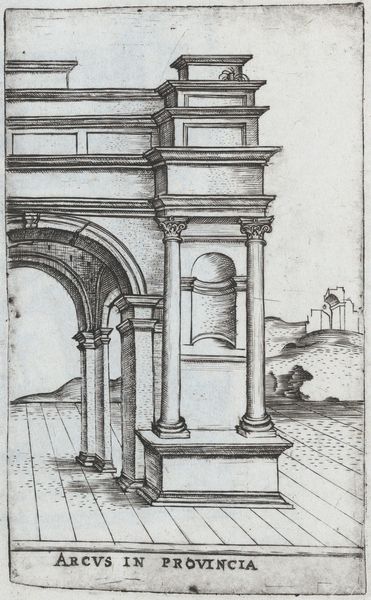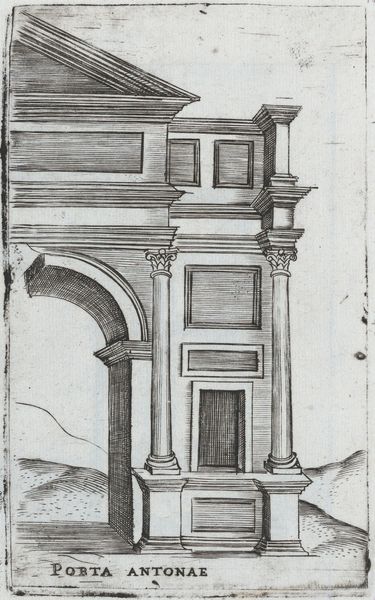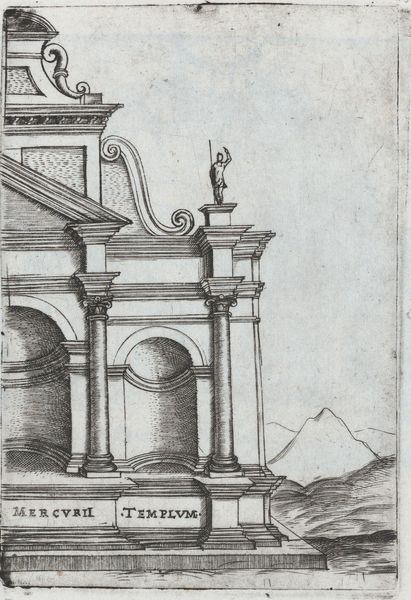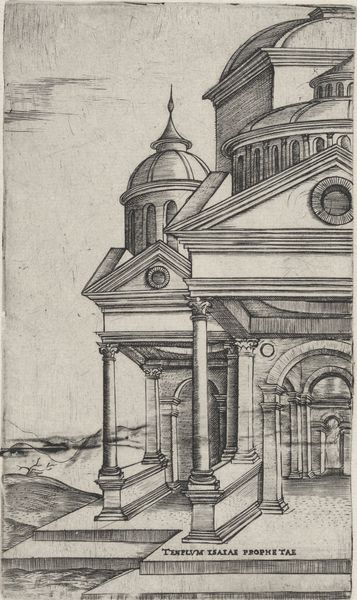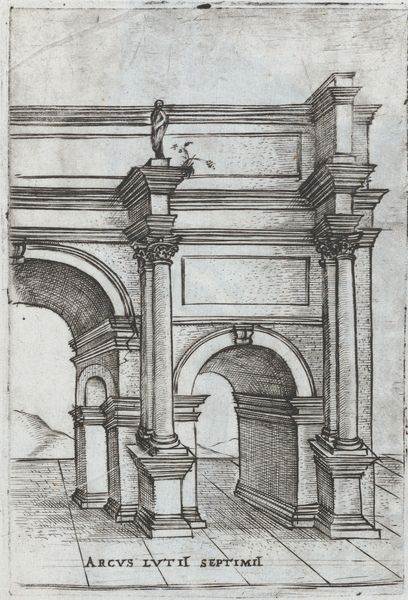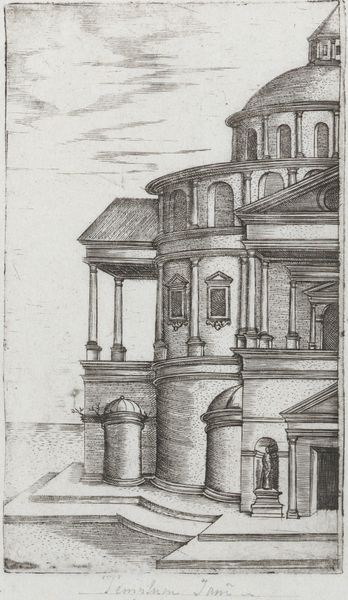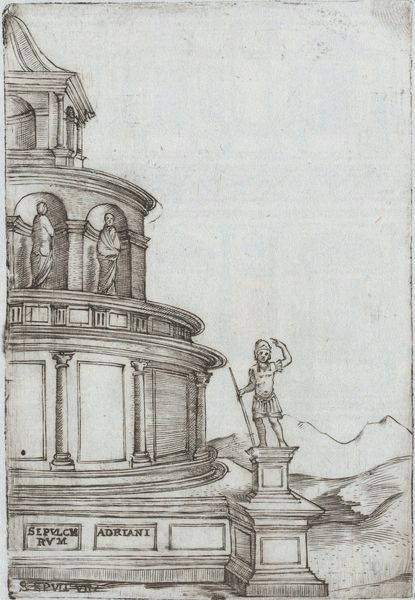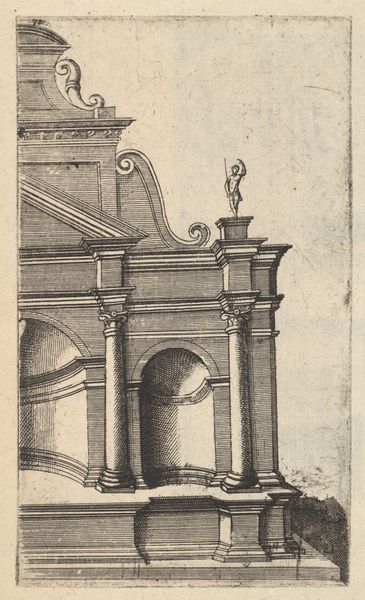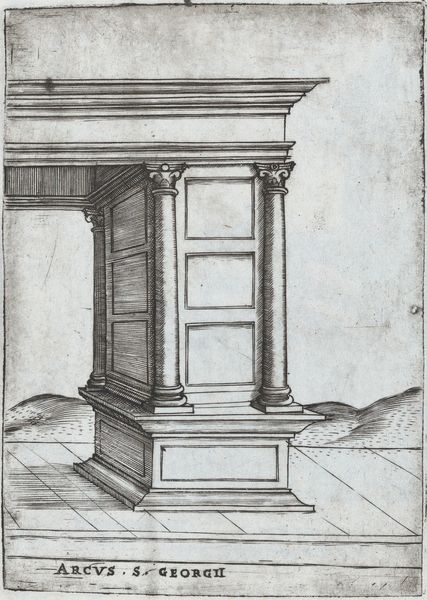
Pinaculu Termar, from a Series of Prints depicting (reconstructed) Buildings from Roman Antiquity 1530 - 1550
0:00
0:00
drawing, print, engraving, architecture
#
drawing
# print
#
form
#
geometric
#
line
#
italian-renaissance
#
engraving
#
architecture
Dimensions: Plate: 4 in. × 5 5/16 in. (10.1 × 13.5 cm) [edges of the plates are not straight, the height varies between 10 and 10.1cm, the width varies between 13.45 and 13.5cm]
Copyright: Public Domain
Curator: This print, dating from around 1530 to 1550, offers a fascinating glimpse into how artists during the Italian Renaissance reimagined the grandeur of Roman architecture. Its creator is Monogrammist G.A., possibly working in conjunction with the Caltrop, and the piece is titled "Pinaculu Termar, from a Series of Prints depicting (reconstructed) Buildings from Roman Antiquity." Editor: At first glance, I’m struck by the austerity of the thing. It’s like looking at a ghostly architectural proposition, stripped down to its barest lines. There’s an ethereal quality to it. Curator: I agree. There's an interesting tension, isn't there, between the objective precision of the engraving technique, the stark linearity, and the very subjective act of reconstructing a past that’s only accessible through fragments and imagination. Editor: Exactly! And the choice of engraving only reinforces this sense of clarity and definition. Observe how each line meticulously delineates form, emphasizing the geometric structures of the building and the deliberate construction of space. It invites us to see architecture as a study of shapes. It's all form here; pure and precise. Curator: Perhaps there is an element of reverence here? An artist working not to reproduce exactly, but to celebrate the abstract *idea* of Roman monumentality? The lines, they breathe life into an idea, almost making something solid from nothing. Editor: Yes, that interplay is quite interesting. Although presented in the guise of documentary, the overall effect is less about conveying tangible historical reality and more about exploring symbolic interpretations and theoretical concepts through representational art. Curator: And doesn't it make you wonder about the ‘reconstructed’ aspect? What parts of this ‘Pinaculu Termar’ were based on archeological finds, and what elements were pure conjecture? That unknown space sparks the imagination, don’t you think? Editor: Precisely. It pushes us to ponder the complex relationship between history and artistic vision, as well as to interrogate the very nature of the process of reconstructing. Thank you, Monogrammist, for not just drawing the temple but for reminding us to ask ourselves how we rebuild anything, even our stories.
Comments
No comments
Be the first to comment and join the conversation on the ultimate creative platform.
